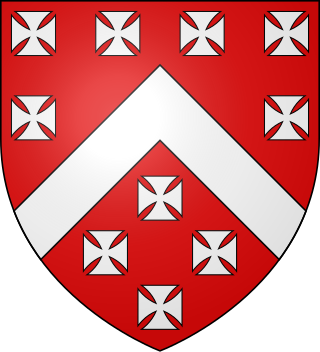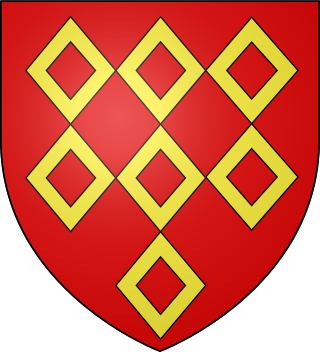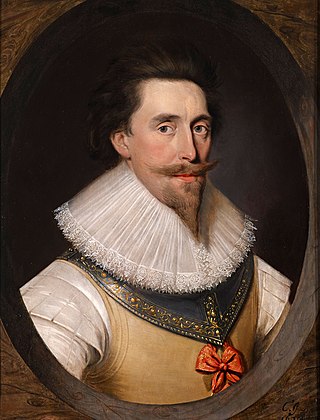
Earl of Abingdon is a title in the Peerage of England. It was created on 30 November 1682 for James Bertie, 5th Baron Norreys of Rycote. He was the eldest son of Montagu Bertie, 2nd Earl of Lindsey by his second marriage to Bridget, 4th Baroness Norreys de Rycote, and the younger half-brother of Robert Bertie, 3rd Earl of Lindsey. His mother's family descended from Sir Henry Norris, who represented Berkshire and Oxfordshire in the House of Commons and served as Ambassador to France. In 1572 he was summoned by writ to Parliament as Lord Norreys de Rycote. He was succeeded by his grandson, the second Baron. In 1621, he created Viscount Thame and Earl of Berkshire in the Peerage of England. He had no sons and on his death in 1624 the viscountcy and earldom became extinct. He was succeeded in the barony by his daughter Elizabeth, the third holder of the title. On her death, the title passed to her daughter, the aforementioned Bridget, the fourth Baroness, and second wife of the second Earl of Lindsey.

Earl of Glasgow is a title in the Peerage of Scotland. It was created in 1703 for David Boyle, Lord Boyle.

Earl of Macclesfield is a title that has been created twice. The first creation came in the Peerage of England in 1679 in favour of the soldier and politician Charles Gerard, 1st Baron Gerard. He had already been created Baron Gerard, of Brandon in the County of Suffolk, in 1645, and was made Viscount Brandon, of Brandon in the County of Suffolk, at the same time as he was given the earldom. These titles are also in the Peerage of England. Lord Macclesfield was the great-grandson of the distinguished judge Sir Gilbert Gerard, Master of the Rolls from 1581 to 1594. He was succeeded by his eldest son, the second Earl. He was involved in the Rye House Plot of 1683, was sentenced to death but later pardoned by the King. On his death without legitimate issue in 1701 the titles passed to his younger brother, the third Earl. He had earlier represented Yarmouth, Lancaster and Lancashire in the House of Commons. When he died in 1702 the titles became extinct.

The title Baron Berkeley originated as a feudal title and was subsequently created twice in the Peerage of England by writ. It was first granted by writ to Thomas de Berkeley, 1st Baron Berkeley (1245–1321), 6th feudal Baron Berkeley, in 1295, but the title of that creation became extinct at the death of his great-great-grandson, the fifth Baron by writ, when no male heirs to the barony by writ remained, although the feudal barony continued. The next creation by writ was in 1421, for the last baron's nephew and heir James Berkeley. His son and successor William was created Viscount Berkeley in 1481, Earl of Nottingham in 1483, and Marquess of Berkeley in 1488. He had no surviving male issue, so the Marquessate and his other non-inherited titles became extinct on his death in 1491, whilst the barony passed de jure to his younger brother Maurice. However William had disinherited Maurice because he considered him to have brought shame on the noble House of Berkeley by marrying beneath his status to Isabel, daughter of Philip Mead of Wraxhall, an Alderman and Mayor of Bristol. Instead he bequeathed the castle, lands and lordships comprising the Barony of Berkeley to King Henry VII and his heirs male, failing which to descend to William's own rightful heirs. Thus on the death of King Edward VI in 1553, Henry VII's unmarried grandson, the Berkeley inheritance returned to the family. Therefore, Maurice and his descendants from 1492 to 1553 were de jure barons only, until the return of the title to the senior heir Henry, becoming de facto 7th Baron in 1553. Upon his death he was succeeded by his relative George Harding.
Baron Lisle was a title which was created five times in the Peerage of England during the Middle Ages and Tudor period, and once in the Peerage of Ireland in the 18th century.

Baron Hunsdon is a title that has been created three times.
Robert Ferrers of Wem. He was born in Willisham, Suffolk.
There have been three baronetcies created for descendants of the ancient Lancashire family of Gerard.

Baron Ferrers of Groby was a title in the Peerage of England. It was created by writ on 29 December 1299 when William Ferrers, 1st Baron Ferrers of Groby was summoned to parliament. He was the son of Sir William de Ferrers, Knt., of Groby, Leicestershire, (d.1287) by his first wife Anne Durward, 2nd daughter of Alan Durward and his wife Margery of Scotland, and grandson of William de Ferrers, 5th Earl of Derby. The first Baron was married to Ellen de Menteith, daughter of Alexander, Earl of Menteith. In 1475 the eighth baron was created the Marquess of Dorset, and the barony in effect merged with the marquessate. It was forfeited along with the marquessate when the third marquess was attainted in 1554.
Baron Boteler was a title that was created three times in the Peerage of England.
George Hamilton, 3rd Earl of Abercorn died unmarried in Padua on a voyage to Rome. He was succeeded by Claud Hamilton, heir of Claud Hamilton, 2nd Baron Hamilton of Strabane, second son of the 1st Earl of Abercorn.

Francis Fane, 1st Earl of Westmorland, of Mereworth in Kent and of Apethorpe in Northamptonshire was an English landowner and politician who sat in the House of Commons between 1601 and 1624 and then was raised to the Peerage as Earl of Westmorland.

Sir Charles Dormer of Wing, 3rd Baronet, 2nd Earl of Carnarvon, 2nd Viscount Ascott, 3rd Baron Dormer of Winge was an English peer. On his father's death at the First Battle of Newbury, on 20 September 1643, he succeeded to his father's titles, at just 10 years of age. His mother had died in June, a few months earlier. He married twice, had four children, but his only son predeceased him and so when he died in 1709 the earldom and the viscountcy became extinct. The baronetcy and barony were inherited by Rowland Dormer, 4th Baron Dormer, a grandson of the second son of the 1st Baron Dormer.
Margaret de Audley,suo jure2nd Baroness Audley and Countess of Stafford was an English noblewoman. She was the only daughter of Hugh de Audley, 1st Earl of Gloucester, by his wife Lady Margaret de Clare. Her mother was the daughter of Joan of Acre, Princess of England; thus making Margaret a great-granddaughter of King Edward I by his first consort, Eleanor of Castile. As the only daughter and heiress of her father, she succeeded to the title of 2nd Baroness Audley [E., 1317] on 10 November 1347.
Robert de Ferrers, 3rd Baron Ferrers of Chartley, was the son of John de Ferrers, 1st Baron Ferrers of Chartley and Hawise de Muscegros, a daughter of Robert de Muscegros.

Henry O'Brien, 5th Earl of ThomondPC (Ire) (1588–1639), styled Lord Ibrickane until 1624, was summoned to the House of Lords of the Irish Parliament of 1613–1615.

Thomas Burgh, 3rd Baron Burgh KG 3rd Baron Borough of Gainsborough, de jure7th Baron Strabolgi and 9th Baron Cobham of Sterborough was the son of William Burgh, 2nd Baron Burgh and Lady Katherine Clinton, daughter of Edward Clinton, 1st Earl of Lincoln and Elizabeth Blount, former mistress of King Henry VIII. He was one of the peers who conducted the trial of the Duke of Norfolk in 1572.

Wingfield Cromwell, 2nd Earl of Ardglass, DCL, was an English nobleman, son of Thomas Cromwell, 1st Earl of Ardglass and Elizabeth Meverell. He held the subsidiary titles of 2nd Viscount Lecale and 5th Baron Cromwell of Oakham.

Lady Elizabeth Southwell, called Lady Cromwell (1674–1709) was an English noblewoman, the only daughter of Vere Essex Cromwell, 4th Earl of Ardglass and wife Catherine Hamilton.

Elizabeth Scott, Duchess of Buccleuch, formerly Lady Elizabeth Montagu, was the wife of Henry Scott, 3rd Duke of Buccleuch.

















